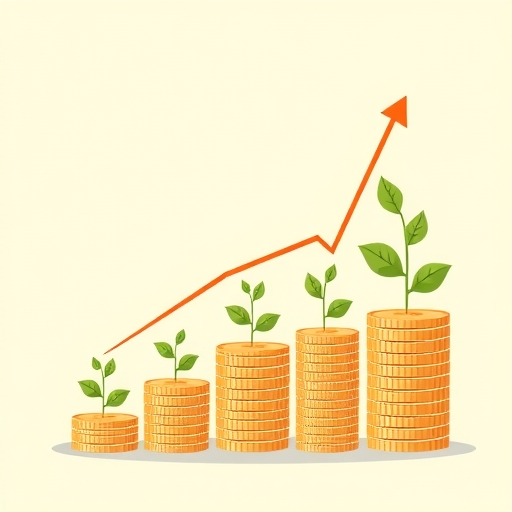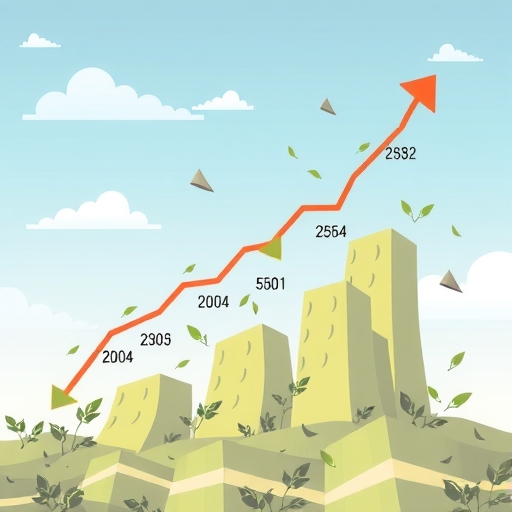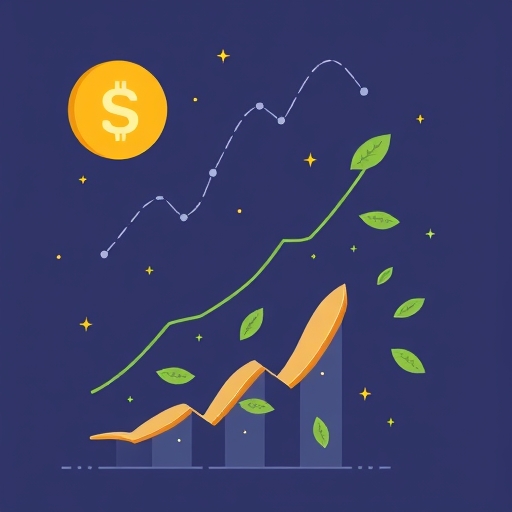Understanding Exchange-Traded Funds (ETFs): A Smart Path to Diversified Investing
Are you looking for a versatile and often cost-effective way to invest in a wide range of assets without buying individual stocks or bonds? Exchange-Traded Funds (ETFs) have emerged as a cornerstone of modern investing, offering a compelling blend of diversification, flexibility, and transparency. These innovative financial instruments allow you to own a piece of many different companies, bonds, commodities, or even cryptocurrencies, all within a single, easily tradable security. In this guide, we’ll demystify ETFs, exploring their core mechanics, the strategic advantages they offer, the diverse types available, and crucial considerations for integrating them into your investment portfolio.
ETFs are designed with several core objectives in mind, making them a popular choice for various investors:
- To provide broad market exposure or target specific sectors and themes.
- To offer a cost-effective alternative to actively managed funds.
- To simplify portfolio diversification, allowing investors to hold multiple assets through a single security.
To further illustrate the versatility of ETFs, consider these common applications:
| ETF Type | Primary Application | Example Use Case |
|---|---|---|
| Index ETFs | Broad market exposure, passive growth | Tracking the performance of a major stock index like the S&P 500. |
| Sector ETFs | Targeted industry investment | Investing specifically in technology, healthcare, or energy companies. |
| Bond ETFs | Income generation, portfolio stability | Diversifying risk from stocks by investing in government or corporate bonds. |
What Are Exchange-Traded Funds (ETFs) and How Do They Operate?
At its heart, an Exchange-Traded Fund (ETF) is an investment product that holds a basket of underlying assets. Think of it like a carefully curated collection – instead of buying one apple (a single stock), you’re buying a share of a basket that contains apples, oranges, and bananas (a diversified mix of assets). These underlying assets can range from stocks and bonds to commodities or even derivatives. When you, as an investor, buy shares of an ETF, you’re essentially participating in the gains or losses of this entire basket, rather than owning the individual assets directly.
A key distinguishing feature of ETFs is how they trade. Unlike traditional mutual funds, which are priced only once a day after the market closes, ETF shares trade on stock exchanges throughout the entire trading day, much like individual stocks. This means their prices fluctuate in real-time based on market demand and supply, giving investors the flexibility to buy or sell at current market prices. ETF providers design these funds to track specific performances, such as a market index like the S&P 500, a particular industry sector, or even the price of a commodity like gold. They then sell shares of these funds to investors, allowing us to gain exposure to broad markets or specialized segments with a single transaction.
The Strategic Advantages: Why Investors Choose ETFs
ETFs have grown immensely popular due to several powerful benefits that appeal to both new and experienced investors. When considering your investment options, understanding these advantages can help you make informed decisions about building a resilient portfolio.
- Diversification: Perhaps the most significant advantage, ETFs inherently offer diversification. By holding a basket of multiple companies, sectors, or asset classes within a single investment, you significantly reduce the risk associated with investing in a single stock or bond. If one company in the basket performs poorly, its impact is lessened by the performance of the others. This built-in diversification provides a buffer against market volatility.
- Lower Fees: Generally, ETFs boast lower expense ratios compared to actively managed mutual funds. An expense ratio is the annual fee charged by the fund provider as a percentage of your investment. Since many ETFs are passively managed, meaning they simply aim to track an index rather than having a manager actively pick stocks, their operational costs are often lower, translating into more of your money staying invested and working for you.
- Transparency: Have you ever wondered exactly what your fund holds? With ETFs, transparency is a major benefit. ETF holdings and their price activity are publicly disclosed daily, providing you with a clear view of where your money is invested. This contrasts with mutual funds, which often report their holdings less frequently.
- Dividends: If the underlying assets within an ETF pay dividends, these payments are typically passed on to you, the investor. This can provide a regular stream of income, especially appealing for certain types of ETFs, like those focused on dividend-paying stocks or bonds.
- Flexible Investment Options: Because ETFs trade like stocks, they offer greater trading flexibility. Investors can buy ETFs on margin (using borrowed funds) or even short-sell them to potentially profit from price declines. While these options come with increased risk, they provide more tools for experienced traders.
- Tax Efficiency: ETFs are often structured in a way that helps reduce annual capital gains taxes for shareholders. Taxes are typically incurred only when you sell your ETF shares, giving you more control over when a taxable event occurs. This can be a significant advantage for long-term investors compared to some mutual funds, which might distribute capital gains annually, regardless of whether you sold your shares.
Beyond the direct advantages, ETFs also offer practical benefits for portfolio construction:
- They can be used as core holdings to build a foundational portfolio.
- They provide tactical exposure to specific industries or geographies, allowing investors to capitalize on short-term trends.
- They are excellent tools for dollar-cost averaging, enabling regular, consistent investments over time.
Navigating the Diverse World of ETF Types
One of the most exciting aspects of ETFs is the sheer variety available. There’s likely an ETF designed to meet almost any investment goal or strategy you can imagine. Let’s explore some of the common types you might encounter:
- Index ETFs: These are arguably the most common type. Index ETFs aim to replicate the performance of a specific market index, such as the S&P 500, the Nasdaq Composite, or various bond indexes. They offer broad market exposure with minimal effort.
- Stock ETFs: As the name suggests, these funds invest primarily in stocks. They can be broad market funds, sector-specific (like a technology or healthcare ETF), or focus on particular investment styles (e.g., growth or value stocks).
- Bond ETFs (Fixed-Income ETFs): These consist of various types of bonds—corporate, federal, provincial, municipal, or high-yield bonds. They typically generate regular cash payments and are often used for income generation and portfolio stability, providing diversification away from pure equity exposure.
- Commodity ETFs: These funds allow you to invest in physical commodities like precious metals (gold, silver), agricultural products, or crude oil, either directly or through derivatives. They can be a way to hedge against inflation or diversify away from traditional financial assets.
- Currency ETFs: If you’re interested in the foreign exchange market, Currency ETFs track the performance of different currencies relative to each other, using various financial instruments.
- Cryptocurrency ETFs: A newer but rapidly growing category, these ETFs provide exposure to digital assets like Bitcoin. They might track the cryptocurrency directly, or invest in futures contracts or companies involved in the crypto market.
- Actively Managed ETFs: Unlike most ETFs that passively track an index, Actively Managed ETFs are overseen by a fund manager who actively buys and sells investments with the goal of outperforming the market or their chosen benchmark. While they offer the potential for higher returns, they typically come with higher expense ratios than passive ETFs.
- Inverse ETFs: These funds are designed to profit when the underlying assets or index declines. They typically use bullish derivatives to achieve this inverse performance and are generally for short-term trading by experienced investors.
- Leveraged ETFs: Using debt and derivatives, Leveraged ETFs aim to amplify returns, often by 2x or 3x the performance of their underlying index. While they offer the potential for significant gains, they also incur significantly increased risk and are generally not suitable for long-term holding.
- Asset Allocation ETFs: These funds are designed to function as a complete portfolio, often containing other ETFs. They balance equity and fixed-income exposure according to a predefined strategy, making them a “one-stop shop” for diversified investing.
- International ETFs: For those looking to broaden their horizons, International ETFs provide a diversified way to invest in foreign stocks and non-U.S. markets, offering exposure to global economic growth.
- Exchange-Traded Notes (ETNs): While similar to ETFs in their trading, ETNs are actually debt instruments that track underlying assets. Crucially, they carry issuer credit risk, meaning their value can be affected by the creditworthiness of the issuing bank, unlike traditional ETFs.
When selecting an ETF, several metrics can guide your decision-making process:
| Metric | Description | Why it Matters |
|---|---|---|
| Expense Ratio | Annual fee as a percentage of assets | Lower fees generally lead to higher net returns over time. |
| Assets Under Management (AUM) | Total value of assets held by the fund | Higher AUM often indicates better liquidity and stability. |
| Tracking Error | Deviation from benchmark index performance | Lower tracking error means the ETF closely mirrors its intended index. |
| Bid-Ask Spread | Difference between buy and sell prices | A narrow spread indicates higher liquidity and lower trading costs. |
Understanding the Risks and Considerations of ETF Investing
While ETFs offer numerous compelling advantages, it’s crucial to understand their potential drawbacks and risks. A balanced perspective is key to making sound investment decisions.
Before investing in any ETF, it’s prudent to consider several key questions:
- Does the ETF’s objective align with your investment goals and risk tolerance?
- What is the ETF’s expense ratio and how does it compare to similar funds?
- How liquid is the ETF, and what is its typical bid-ask spread?
- Trading Costs: While many brokerage platforms now offer commission-free ETF trades, it’s important to remember that other trading costs can still apply. Investors must account for the bid-ask spread – the difference between the highest price a buyer is willing to pay and the lowest price a seller is willing to accept. This spread can be wider for less liquid or less frequently traded ETFs, effectively increasing your transaction costs.
- Potential Liquidity Issues: Some ETFs, particularly those focusing on niche markets or with lower assets under management, may suffer from liquidity issues. Less frequently traded ETFs can be harder to buy or sell at your desired price, especially during volatile market periods, due to wider bid-ask spreads.
- Risk of Fund Closure: ETFs are not immune to closure. If an ETF doesn’t attract enough assets or becomes unprofitable for its provider, it may be closed down. This forces investors to sell their shares prematurely, potentially at an inconvenient time or even a loss, even if they had a long-term investment horizon.
- Tracking Error: Passively managed ETFs aim to perfectly replicate the performance of their benchmark index. However, due to factors like fees, operational expenses, or market dynamics, an ETF might not perfectly match its index’s returns. This deviation is known as tracking error, and while often small, it’s a factor to consider.
- Lack of Customization: ETFs are pre-made funds, offering inherent diversification. However, this also means you have no direct control over the selection of individual securities within the basket. If you have strong convictions about specific companies, you might find ETFs too broad for highly customized investing.
- Increased Risk with Complex ETFs: We discussed types like leveraged and inverse ETFs earlier. It’s vital to reiterate that these complex instruments carry significantly higher risks and are generally suited for experienced investors with very short-term trading objectives. They are not designed for long-term holding and can lead to substantial losses quickly.
- Currency Risk: If you invest in International ETFs, your returns can be impacted by fluctuations in currency conversion rates. A strong U.S. dollar, for example, can diminish returns from investments in countries with weaker currencies.
- Loss Aversion: This is a psychological risk. Investors often feel the pain of losses more acutely than the joy of gains. Market fluctuations, which are inherent to ETF investing, can trigger this feeling, potentially leading to impulsive, suboptimal decisions. A solid investment strategy and clear goals are crucial to mitigate the impact of loss aversion.
Understanding risks is vital, and employing smart strategies can help mitigate them:
| Risk Factor | Mitigation Strategy | Benefit |
|---|---|---|
| High Trading Costs | Choose commission-free ETFs, trade less frequently, check spreads | Reduces overall investment expenses. |
| Liquidity Issues | Invest in highly traded, large-cap ETFs | Ensures easier entry and exit at desired prices. |
| Tracking Error | Review historical performance and fund methodology | Helps select ETFs that closely match their benchmark. |
| Complex ETFs (Leveraged/Inverse) | Avoid for long-term investing, use only with deep understanding for short-term hedges | Prevents significant, unexpected losses. |
Integrating ETFs into Your Investment Strategy: Comparisons and Getting Started
Understanding how ETFs compare to other popular investment vehicles and knowing the practical steps to start investing can help you confidently integrate them into your financial plan.
ETFs vs. Other Investments:
To truly appreciate ETFs, it helps to see how they stack up against other common choices:
| Feature | Exchange-Traded Fund (ETF) | Mutual Fund | Individual Stock |
|---|---|---|---|
| Trading Frequency | Trades throughout the day like a stock, real-time prices. | Trades once daily after market close, based on end-of-day Net Asset Value (NAV). | Trades throughout the day, real-time prices. |
| Diversification | High (holds a basket of securities, sectors, or assets). | High (holds a basket of securities). | Low (single company exposure, high specific risk). |
| Fees | Generally lower expense ratios, can have trading commissions (though many are commission-free). | Often higher expense ratios, can have sales charges (loads) and trailer fees. | Trading commissions (though many are commission-free). |
| Transparency | Daily disclosure of holdings and prices. | Less frequent disclosure (e.g., quarterly or semi-annually). | Full transparency (you know exactly what you own). |
| Tax Efficiency | Often tax-efficient, capital gains typically realized upon sale of shares. | Can distribute capital gains annually, regardless of whether you sold. | Capital gains realized upon sale of shares. |
As you can see, ETFs combine the diversification benefits of mutual funds with the trading flexibility and transparency of individual stocks, often at a lower cost. For example, investing in an S&P 500 ETF gives you exposure to 500 large U.S. companies with one purchase, buffering you against the volatility that comes from investing in just one company like Apple or Microsoft.
How to Invest in ETFs:
Ready to start your ETF journey? Here’s a simple, step-by-step guide:
- Open and Fund a Brokerage or Retirement Account: First, you’ll need an investment account that supports ETF trading. This could be a standard brokerage account, or a tax-advantaged retirement account like an Individual Retirement Account (IRA) – either a Roth IRA or a Traditional IRA – or even a Health Savings Account (HSA), depending on your financial goals.
- Research and Select ETFs: This is where your due diligence comes in. Thoroughly research ETFs that align with your personal financial goals, risk tolerance, and investment horizon. Are you looking for long-term growth? Income? Exposure to a specific sector? Examine the fund’s objectives, its current holdings, and its expense ratio. Resources like Morningstar or your brokerage platform can provide detailed information.
- Place Your Buy Order: Once you’ve identified the right ETF, you’ll use its unique ticker symbol (e.g., “SPY” for an S&P 500 ETF) to place a buy order through your brokerage platform. You can choose to buy a specific number of shares or invest a certain dollar amount, depending on your broker’s options.
- Develop an Exit Strategy: While you might be investing for the long term, it’s always wise to have an exit strategy. This means having clear price targets for taking profits or stop-loss orders to minimize potential losses. This helps you maintain discipline and stick to your investment plan, even when market conditions are challenging.
Conclusion
Exchange-Traded Funds offer a powerful, accessible, and often cost-effective avenue for investors to achieve diversification, manage costs, and gain exposure to a vast array of markets and asset classes. Their unique structure, which marries the benefits of pooled investments with the real-time trading flexibility of stocks, positions them as a cornerstone of modern portfolio management. By carefully considering an ETF’s type, costs, liquidity, and how well it aligns with your personal financial goals and risk tolerance, you can effectively leverage these instruments to build a well-rounded and potentially tax-efficient investment strategy for your future.
By carefully considering an ETF’s type, costs, liquidity, and how well it aligns with your personal financial goals and risk tolerance, you can effectively leverage these instruments to build a well-rounded and potentially tax-efficient investment strategy for your future.
Disclaimer: This article is for informational and educational purposes only and does not constitute financial advice. Investing in Exchange-Traded Funds (ETFs) involves risks, including the potential loss of principal. Before making any investment decisions, you should consult with a qualified financial professional to determine if ETFs are suitable for your individual circumstances and financial goals.
Frequently Asked Questions (FAQ)
Q: What is the main difference between an ETF and a mutual fund?
A: The primary difference lies in how they trade. ETFs trade on stock exchanges throughout the day like stocks, with prices fluctuating in real-time. Mutual funds, conversely, are priced only once daily after the market closes, based on their Net Asset Value (NAV). ETFs also generally offer lower expense ratios and greater tax efficiency compared to actively managed mutual funds.
Q: Are ETFs suitable for beginners?
A: Yes, many ETFs are highly suitable for beginners, particularly broad market index ETFs. They offer instant diversification with a single purchase, often have low fees, and are transparent in their holdings. However, beginners should avoid complex ETFs like leveraged or inverse funds, which carry significantly higher risks.
Q: How do I choose the right ETF for my portfolio?
A: Choosing the right ETF involves aligning it with your investment goals, risk tolerance, and time horizon. Consider the ETF’s objective (e.g., growth, income, specific sector), its expense ratio, assets under management (AUM), and its tracking error relative to its benchmark. Researching the underlying holdings and consulting a financial advisor can also be beneficial.



No responses yet